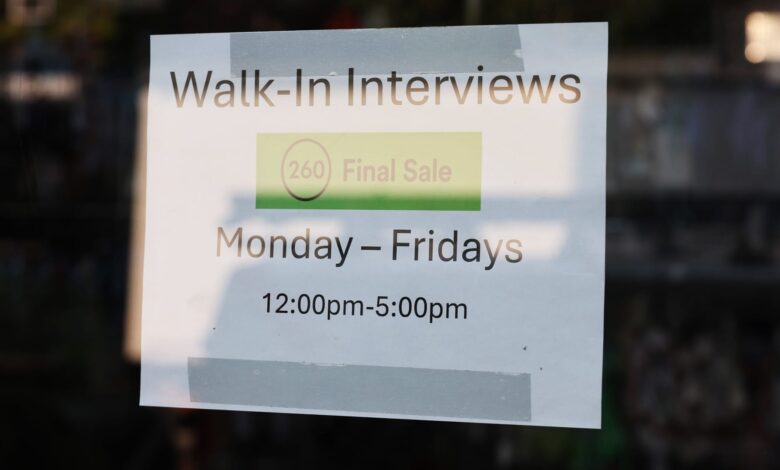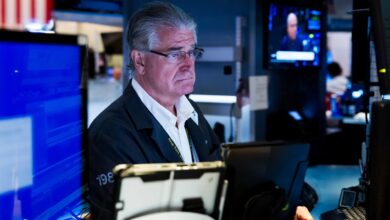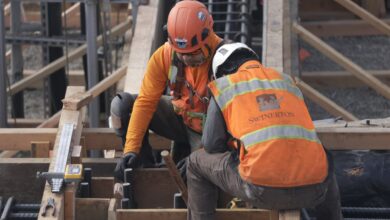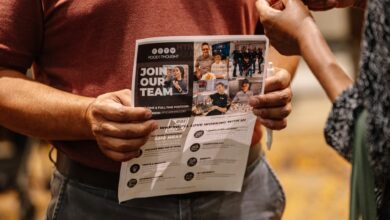The Fed now will focus on the employment part of its mission — and for good reason

Federal Reserve officials have made it clear that they are turning their attention from a focus squarely on inflation to at least an equal concern about unemployment, and the latest data shows their concern is well placed. Various indicators are pointing to a labor market that, if not in outright deterioration, is at least slowing. And history has shown that once unemployment starts to accelerate, it does so quickly. “The Fed should be concerned. The gears are already in motion,” said Troy Ludtka, senior U.S. economist at SMBC Nikko Securities. “Unemployment takes the stairs down and the elevator up.” The latest signs of trouble for the jobs picture came Tuesday when The Conference Board released its monthly survey on consumer confidence. While the headline number for August showed a slight improvement, the picture that the survey painted of the labor market wasn’t as optimistic. Respondents who considered jobs “plentiful” edged lower to 32.8%, while those who said employment is “hard to get” nudged higher to 16.4%. Though the movements from the July survey were small, the gap between the two fell to 16.4 percentage points, or more than 30 percentage points below its 47.1-point peak in March 2022, according to Ludtka. “Declines of this magnitude tend to occur when the economy is heading into recession and when the unemployment rate is on the ascent,” he said. If historical trends hold true, the gap between the two is more consistent with an unemployment rate of 4.8%, or half a percentage point higher than the July rate, Ludtka added. Other signs of trouble The Conference Board survey comes just a few weeks after the Labor Department reported growth of just 114,000 nonfarm payrolls jobs in July. Last week, the department also revealed, in a preliminary estimate, that it had overcounted job gains from April 2023 to March 2024 to the tune of 818,000, the largest annual revision in 15 years. Both pieces of news are unwelcome to the Fed as it balances its dual mandate of full employment and price stability. With inflation gradually easing back toward 2% , central bank officials have been saying lately that the risks to either side are leveling, while emphasizing the importance of not holding policy so strict that it chokes off the jobs market and endangers the broader economy. Previously, the Fed had been locked in a battle to bring down inflation that had hit a 40-year peak two years ago. That 4.3% unemployment rate is 0.8 percentage point higher than the 3.5% rate in July 2023. That kind of climb higher historically has been consistent with recessions in the U.S., under what is known as the “Sahm Rule” of economics , though the U.S. economy has continued to grow. In his closely watched speech last week , Fed Chair Jerome Powell expressed some concern about the jobs picture, saying that hiring has “cooled considerably” while noting that, “We do not seek or welcome further cooling in labor market conditions.” “The focus on the Fed is going to be on the jobs front,” said Beth Ann Bovino, U.S. Bank’s chief economist. “Households are rightfully disappointed. It was a huge workers’ market. Now it’s coming more into better balance. That doesn’t feel so good. Before you had five offers, now you only get one. That’s the frustration out there. Businesses are still holding onto their workers, but they’re canceling those job openings. Job vacancies indeed have contracted, down to 8.2 million in June, or nearly a million lower than they were a year prior and 4 million below the historical peak in March 2022. Still, the current level is well above where it stood before the Covid pandemic hit, and there still are about 1.2 jobs for each available worker. San Francisco Fed President Mary Daly earlier this week told Bloomberg News that “we haven’t seen any deterioration in the labor market,” though she still expects the central bank to start cutting interest rates soon. Markets are pricing in a 100% chance of an initial rate cut in September, and most observers saw Powell’s speech as confirmation of an impending move. All about the data How rapidly the Fed cuts is now the main question, and that likely will depend largely on the health of the labor market more so than what the latest inflation numbers due Friday show. In their most recent update, filed in June, Fed officials indicated they expect the unemployment rate to hold right around steady through 2026 and beyond, and in fact dipping slightly to 4.2% over the long run. However, there’s little if any historical precedent to suggest that will be the case. The unemployment rate almost always either heads up or down, with little evidence of extended plateaus. The current momentum is up, though the consensus estimate for August is that the unemployment rate will tick down to 4.2%, according to FactSet. Nonfarm payrolls are projected to expand by 175,000. However, SMBC Nikko sees the unemployment in the mid-5% range in a year, something that could force the Fed into a more aggressive rate-cutting posture. “When you talk to firms … it doesn’t look like the labor market is not healthy,” former Cleveland Fed President Loretta Mester said Tuesday on CNBC. “It is moderating. That’s something that’s going to be the challenge, to make sure you’re calibrating your monetary policy for a labor market as it continues to moderate, perhaps, but not losing sight of the fact that inflation hasn’t gotten back to 2% yet,” she added. “That balancing of those risks to both parts of the mandate is sort of what is happening now, and what is new.”



